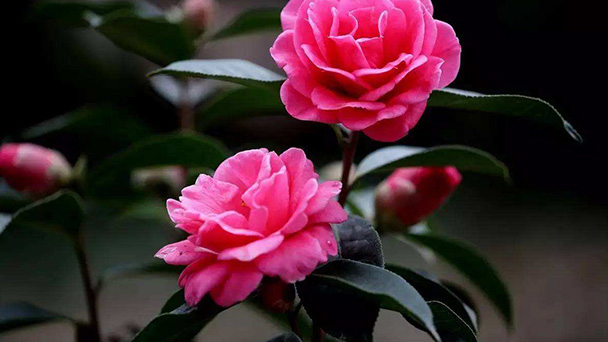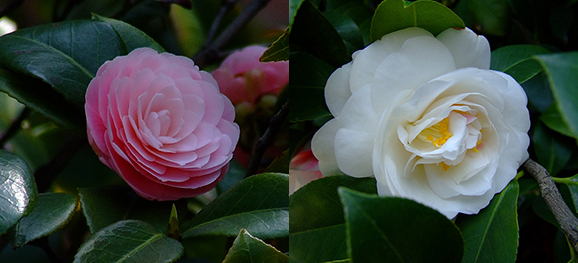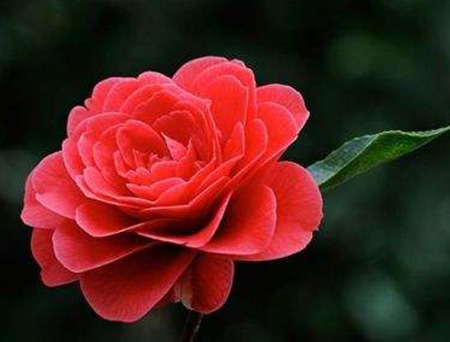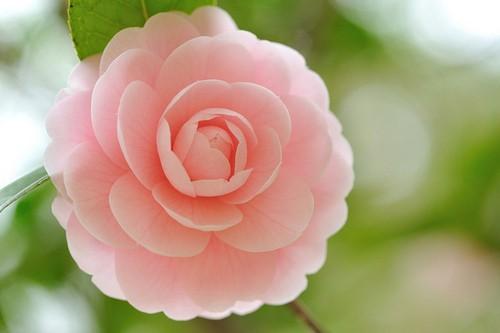How to grow Camellia japonica L
Written by Maggie
Nov 18 2020

Camellia japonica L is a traditional Chinese ornamental flower. Some people wonder what is the planting technique of such a precious and elegant Camellia japonica L. Just pay attention to spread the roots and connect the roots with soil during planting. Water less in winter and more in summer. Water, pay attention to the temperature not higher than 36 ℃, carry out reasonable fertilization, frequently change the pot soil, observe whether there is insect damage and treat it in time.
Camellia japonica L picture

Camellia japonica L 8 planting techniques
1. Soil requirements
Camellia japonica L seedlings should be planted in flower pots within a short period of time. Be sure not to plant them overnight. Before planting Camellia japonica L, set the flower pot soil in a ratio of 2:3:4 to fine sand, mycorrhizal soil, and humus soil. Well matched. When planting, the roots of camellia japonica l should be unfolded and not excessively bent to prevent the root system from being crushed by the soil during planting. The soil above the roots should be properly depressurized, so that the roots and soil are closely connected to improve the water absorption capacity of the roots.
2. Watering in seasons
After planting Camellia japonica L, pay attention to watering, because Camellia japonica L also has strict water requirements. Keep the soil moisture when watering. Too dry will cause death due to lack of water, and too wet will rot the roots. The amount and frequency of watering will also change due to the change of seasons. In spring and autumn, the amount of water will be more. The soil can be formed into a ball after each watering, and the soil can be loosened. It is most suitable to water less in winter and more in summer. Water, every time you water as much as possible, but not water accumulation, do not water against the roots of the tree, to avoid root damage.
3. Light management
Plants must undergo photosynthesis in order to grow. Camellia japonica L planting technology must control light. Camellia japonica L is suitable for growth in a warm climate, and the temperature is 15℃~25℃. In summer, the maximum temperature should not exceed 36℃. To prevent burns, pay attention to the shade. You can put Camellia japonica L indoors and spray water regularly. In winter, the temperature should not be below minus 10℃, otherwise the flower branches and flower buds will be frostbite.
4. Reasonable fertilization
Proper fertilization will promote the blooming water of Camellia japonica L. During the growth of Camellia japonica L, fertilization should be continuously applied to supplement nutrients. Generally, organic fertilizers are selected as fertilizers. This fertilizer has a long-lasting effect and is not easy to lose. It will be used more than other fertilizers. Potassium fertilizer should be used when growing Camellia japonica L, which can promote the development of root type. Nitrogen fertilizer should be used when flowers germinate, which can promote the growth of flower buds. Phosphorus fertilizer should be used when blooming, which can increase the vividness of flowers.

5. Timing pruning
There are three points to pay attention to when pruning Camellia japonica L. The first is to cut off the broken branches. The second is to trim according to the needs. The third is to avoid the top effect of Camellia japonica L. The main branch should be cut off and how long. Side buds prevent the branches from being too high to waste space.
6. Wipe buds and sparse buds
Smearing buds is to remove the axillary buds on the branches of Camellia japonica L, and concentrate the nutrition to the sprouting flower buds of the lateral branches. Although bud thinning reduces the number of flower buds, it can ensure the quality of the flowers. Just leave one bud on each branch and cut off the remaining side buds to avoid nutrient dispersion.
7. Change pots and soil
Camellia japonica L flowerpots are of different sizes. According to the growth stage of Camellia japonica L, change the pots and soil frequently, otherwise the growth of Camellia japonica L will be inhibited. Change the pots every 3 years or so, and change the pots when the soil is dry. The new pot needs to be soaked in water for about 12 hours, and the old pot needs to be disinfected before use. Some small stones, coarse sand, etc. can be added to the pot. The soil will be as permeable as possible, the root system will develop, and the branches will flourish.

8. Control pests
Camellia japonica L has different degrees of pest damage except in winter. Aphids often appear on the branches and leaves of Camellia japonica L, sucking nutrients from the branches, causing the leaves to shrink and fall. If you find that there are aphids, you can use 1000 times of 50% dichlorvos to spray once every 10 days or so for 3 times. In daily life, pay more attention to observation and timely treatment.
Latest Updated
- Benefits of Bugleweed - 7 Science-backed Health Benefits
- Bugleweed Dangers & Side Effects - Is It Poisonous?
- How to Plant Evergreen Trees - What You Should Know
- When to Plant Evergreens - Grow Guide for Evergreen Trees
- 12 Wonderful Evergreen Shrubs for Your Garden
- 12 Popular Evergreen Plants with Pictures for Beginners
- When And How To Prune A Lilac Bush Like a Pro
- How to Grow & Care for Lilac Vine (Hardenbergia Violacea)
- Japanese Lilac Tree (Syringa Reticulata) Care & Propagation Guide
- Shumard Oak Pros and Cons - What to Know
Popular Articles
- Winter maintenance of Antirrhinum Majus
- How to Grow Terminalia Mantaly Tree
- How to Grow and Care for Crossostephium Chinense
- How to grow Antirrhinum Majus in spring
- Peristeria Elata (Dove Orchid) Profile: Info & Care Guide
- Underwatered Snake Plant (Sansevieria Trifasciata) - Signs And How To Fix
- How to Care for Brazilian Jasmine Plant (Mandevilla Sanderi)
- How to Grow & Care for Graptopetalum Purple Delight in Summer
- Rosa Chinensis (China Rose): Plant Growing & Care Tips
- How to Care for Baby Sun Rose (Aptenia Cordifolia)